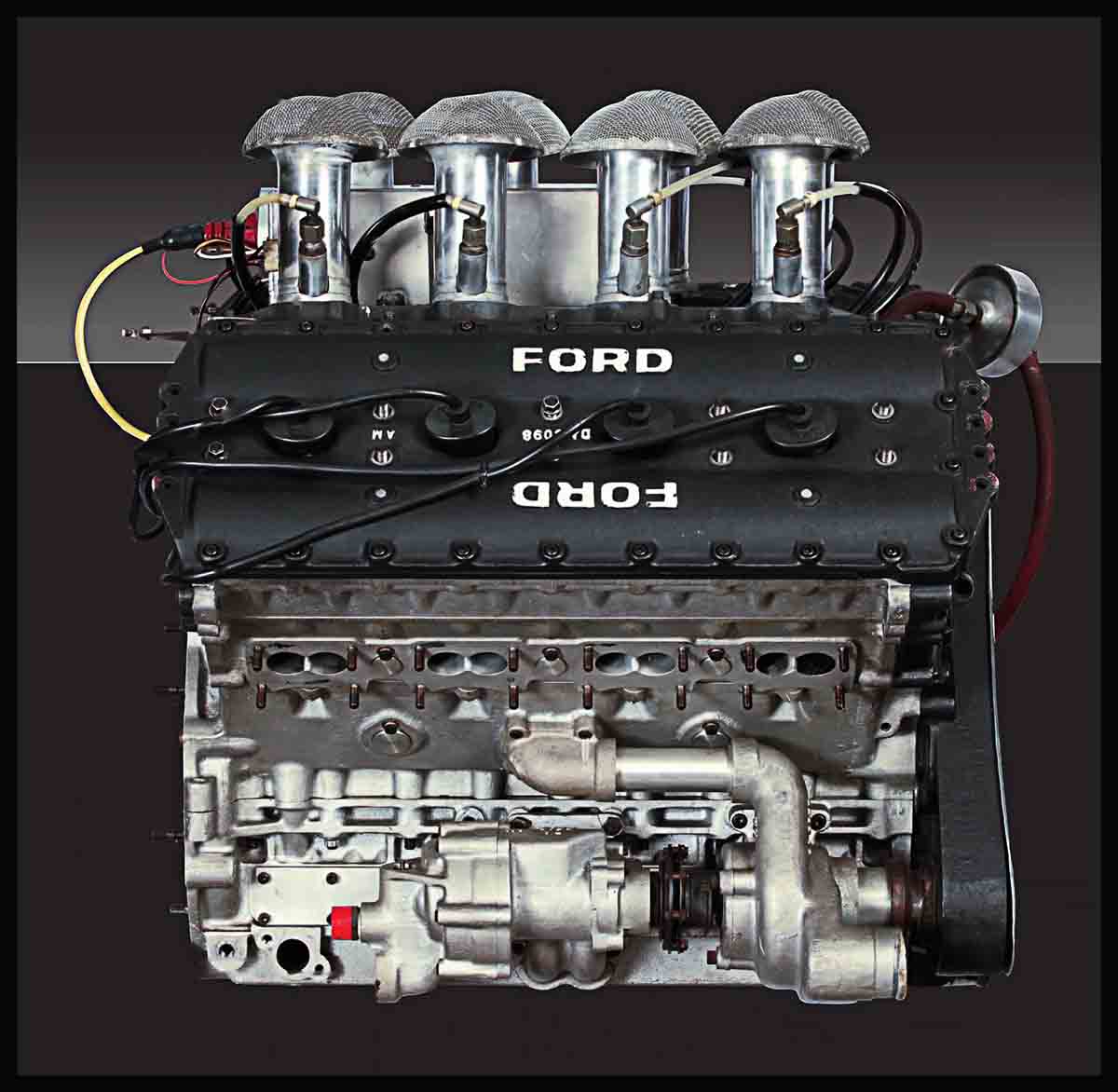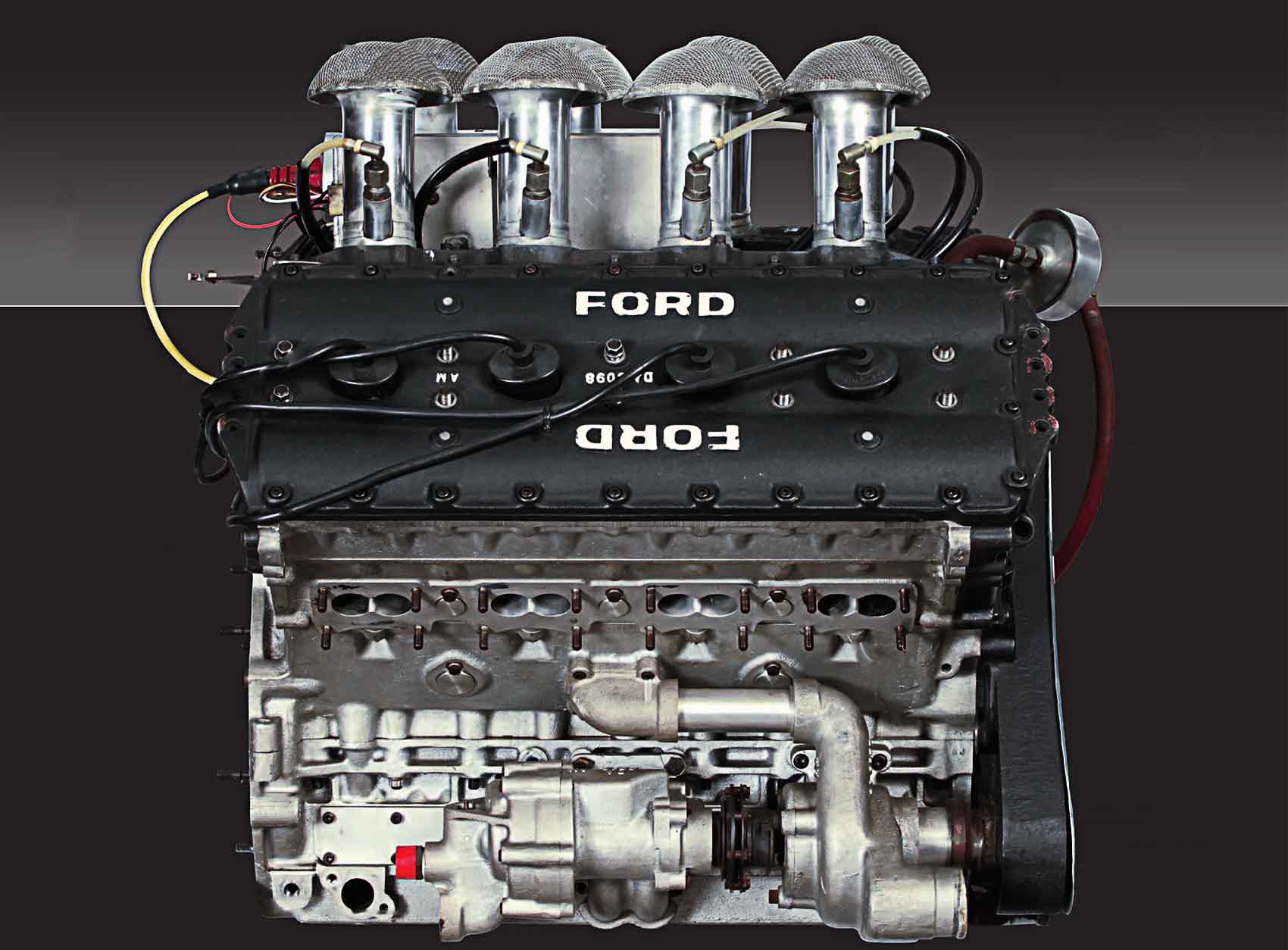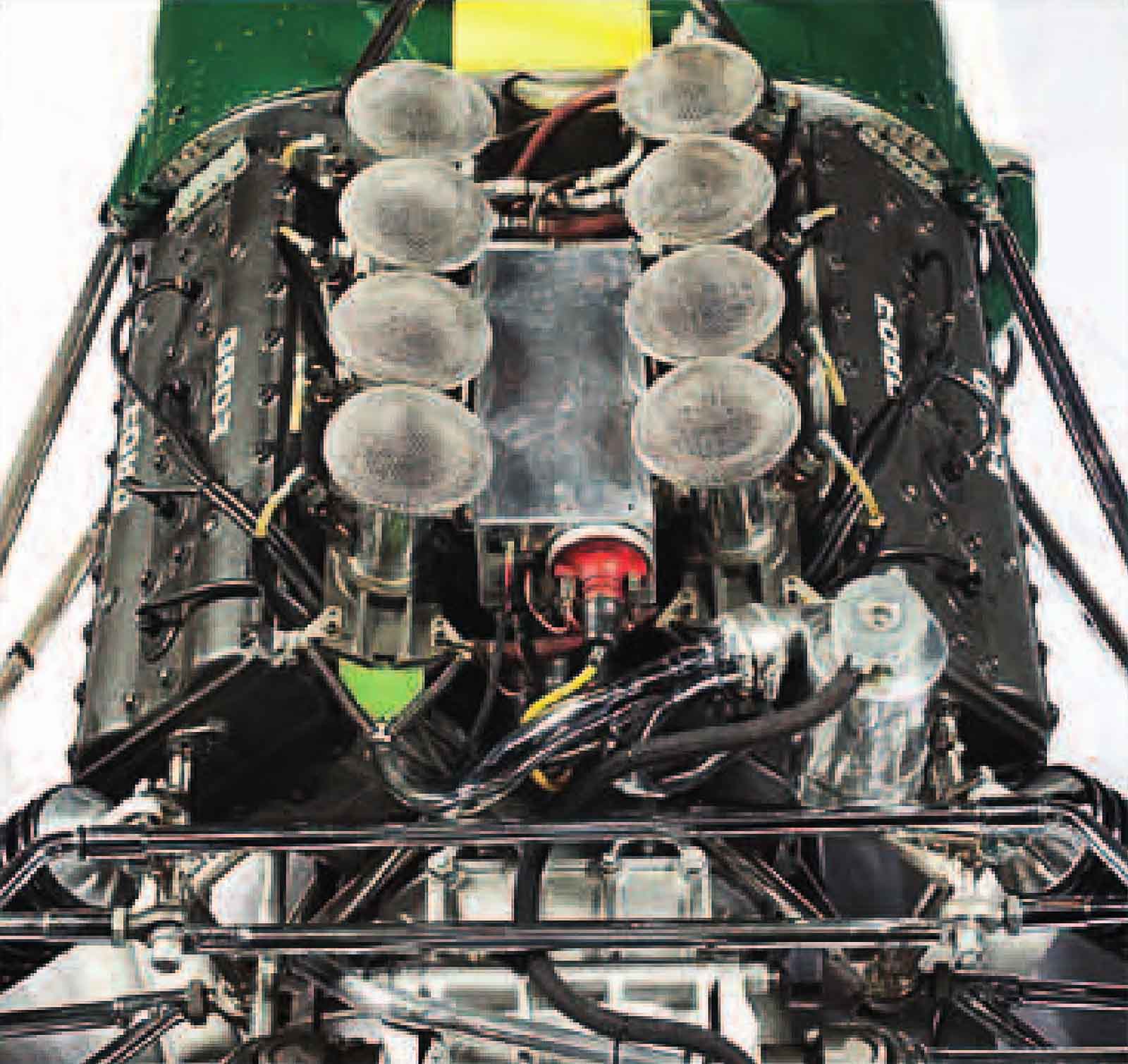
Lotus/Ford Cosworth DFV V8
When Lotus founder Colin Chapman-dissatisfied with the engines available to him-asked Ford to commission a new power plant for Formula 1, Ford turned to Cosworth’s Keith Duckworth. The resulting engine was legendary, winning 12 driver’s titles between 1968 and 1982.
FORMULA 1 SUPERSTAR
Cosworth called this engine the DFV (Double Four Valve) because it had two banks of four cylinders arranged in a 90-degree “V,” with each cylinder having twin inlet and exhaust valves. The former were on top of the engine to give an unobstructed path to air drawn in through the inlet trumpets. A flat crankshaft operated each bank of cylinders as a straight-four to exploit wave effects in the exhaust pipes, which helped extract spent cylinder gases. Powerful, reliable, compact, and sturdy, the DFV was also popular for its precise construction.

ENGINE SPECIFICATIONS
| Dates produced | 1967-1986 |
| Cylinders | Eight cylinders in two banks, 90-degree “V” |
| Configuration | Mid-mounted, longitudinal |
| Engine capacity | 2,993 cc |
| Power output | 408 bhp @ 9,000 rpm, ultimately 510 bhp @ 11,200 rpm |
| Type | Conventional four-stroke, water-cooled gas engine with reciprocating pistons, designed to form part of the car’s structure |
| Head | dohc per bank with bucket tappets; four valves per cylinder |
| Fuel System | Lucas port fuel injection |
| Bore and Stroke | 85.7 mm x 64.8 mm (3.37 in x 2.55 in) |
| Specific power | 136 bhp/liter, 2.52 bhp/kg |
| Compression Ratio | 11.0:1 |

A hidden issue
When the DFV won its first Formula 1 race in the Lotus 49 in 1967, few onlookers could have suspected that it had a serious design problem. Brief episodes of excessive torque (twisting force) in the gear drive to the camshafts risked damage to the engine. The problem was solved by Duckworth adding a springy “quill shaft” that reduced the severity of these spikes in torque.
It is a quote. The Definitive Visual History Of The Automobile 2011




